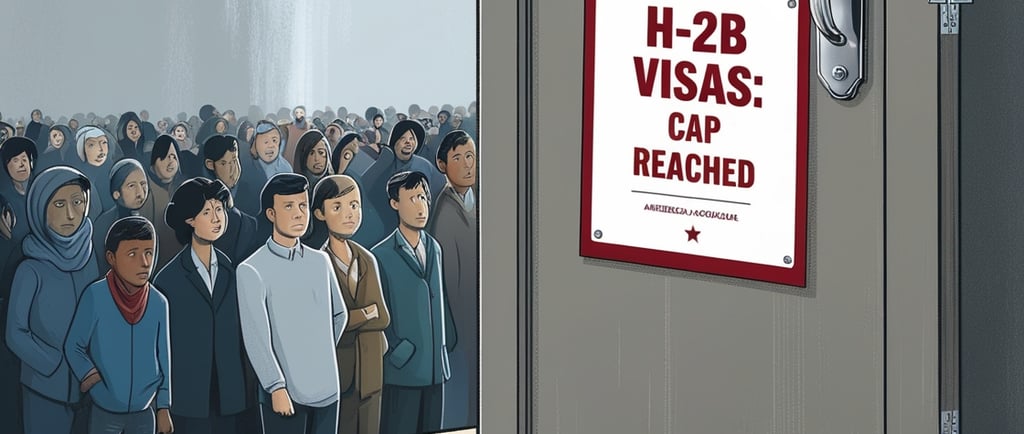H-2B Visas Cap Reached for Returning Workers: No More H2B FY 2025
USCIS has announced the cap for 19,000 supplemental H-2B visas for returning workers has been reached for the early second half of the 2025 fiscal year. These employment visas are crucial for industries like landscaping, seafood processing, and hospitality that depend on seasonal labor.
Md Abdullahel Kafi
4/25/20252 min read


No More H-2B Visas: Returning Worker Cap Hits Limit for April-May Jobs
H-2B Visa, H1-B Visa
The U.S. Citizenship and Immigration Services (USCIS) has announced that it has reached the cap for 19,000 supplemental H-2B visas designated for returning workers for the early second half of the 2025 fiscal year. These visas, reserved for employment start dates between April 1 and May 14, serve industries that heavily rely on seasonal labor, such as landscaping, seafood processing, and hospitality. Employers who missed this allocation will need to await future opportunities or explore alternative workforce solutions under U.S. immigration regulations.
Visa Cap Reached
USCIS confirmed that the limit for the additional 19,000 H-2B visas had been reached as of April 18, 2025. This supplemental allocation, authorized under a Temporary Final Rule (TFR) jointly issued by the Department of Homeland Security (DHS) and the Department of Labor (DOL), was part of a phased release of 64,716 additional visas for FY 2025. These visas were designed to address labor shortages in non-agricultural, seasonal industries.
Understanding the H-2B Supplemental Cap
The Temporary Final Rule provided supplemental visas to mitigate labor gaps in critical industries. Of the total allocation, 19,000 visas were specifically reserved for workers who participated in the H-2B program during the past three fiscal years. This “returning worker” provision aimed to bolster operational continuity and efficiency by allowing employers to bring back experienced seasonal workers.
Eligibility and Visa Distribution
To qualify for the H-2B supplemental visas, employers needed to demonstrate:
That the job was non-agricultural and temporary.
A shortage of U.S. workers able and willing to perform the work.
No adverse impact on the wages or working conditions of domestic workers due to employing H-2B workers.
The allocation also prioritized workers from select countries, including El Salvador, Guatemala, Honduras, and Haiti, as part of an effort to promote lawful migration pathways for individuals from regions facing economic and humanitarian challenges.
Addressing Labor Needs with Oversight
USCIS and DHS underscored that the expanded visa cap is a temporary response to labor demands and does not represent a permanent shift in immigration policy. Strict recruitment and wage compliance standards were enforced to ensure fair treatment of all workers and protect domestic labor markets.
For businesses, the returning worker allocation significantly reduced training costs, enhanced productivity, and ensured the retention of skilled seasonal workers.
Looking Ahead
With the cap for early FY 2025 filled, businesses are encouraged to monitor future announcements regarding supplemental visa allocations. Additional phases of the FY 2025 H-2B supplemental cap are expected to open later in the year, offering employers another chance to apply.
Employers should prepare their petitions early and remain compliant with USCIS guidelines to increase their chances of securing H-2B visas in subsequent phases. The ongoing demand for seasonal labor underscores the vital role of programs like H-2B in shaping U.S. immigration policy.
Stay Updated
For further updates on H-2B visa allocations, employers and individuals are encouraged to consult:
For specific immigration questions, visit Immigration Question to get professional advice, or check out Immigration Speed for streamlined case management solutions.
Dream to the USA: https://dream2usa.net/
